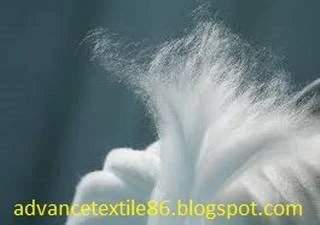Tencel fabric
Tencel or lyocell is a fabric made from wood from the
eucalyptus tree. Tencel fibers are made from eucalyptus wood pulp that is
melted and cut into fibers but woven together to create an extremely strong yet
smooth fabric. This fabric is called Tencel fabric. It is a durable fabric,
which regenerates from wood cellulose. It is like rayon and bamboo, both
regenerated fabrics. However, the Tencel is one of the eco-friendly regenerated
fabrics for several reasons. Its fibers are grown sustainably.
History of Tencel fabric
The lyocell process was developed in 1972 by a team
at the current American Enka Fiber Company in Enka, North Carolina. In 2003,
the development was recognized by the American Association of Textile Chemists
and Colorists as the Henry E. Milson Award for discovery. The operating name of
the fiber inside the Enka company was Newcell. Courtaulds Fibers in
Coventry, UK, and Fiber at a pilot plant in Grimsby, UK, were added in the
1980s. The process was first commercialized in 1992 at the Alabama Mobile,
Courtaulds Rayon Factory, and in 1998 at the Grimsby Plant. Courtaulds was
acquired in 1998 by Akzo Nobel, a subsidiary of the Tencel division under the
Accordis banner, to sell to private equity. In 2000, CVC sold the tensile
division to Lenzing AG, which linked it to their "Lenzing Lyocell"
business but retained the brand name Tencel.
Properties of Tencel fabric
i.
Tencel fabric is stronger than any other cellulosic fibers fabric, especially
when wet
ii.
It is easy to process into yarns and fabrics alone or in blends
iii.
It is easy to blend with other fiber
iv.
It is easy to spin to fine-count yarns
v.
It is very stable in washing and drying
vi.
It is thermally stable
vii.
It is easy to dye deep vibrant colors
viii.
It is capable of taking the latest finishing techniques to give a unique drape
ix.
It is comfortable to wear
x.
It is soft, strong absorbent, lightweight, breathable, comfortable
xi.
It is fibrillated during wet processing to produce special textures
xii.
It has high wet and dry strength, it is stronger than Cotton and Wool.
xiii.
It has wrinkle-resistant properties
xiv.
It is a very versatile fabric, dyeable to vibrant colors, with a variety of
effects and textures.
xv.
It can be hand washable
xvi.
It Simulates silk, suede, or leather touch
xvii.
It has a good drape ability
xviii.
It is biodegradable
xix.
It is possible for high yarn counts can be spun
xx.
It is resistant to sunlight, abrasion, and aging
xxi.
Its hand-feel is similar to rayon
The manufacturing process of Tencel fabric
Hardwood
chips like eucalyptus are used as the raw material of cellulose used in making
this fabric. The trees used for this purpose usually grow on managed tree
farms. Once the trees have reached the facility of Tencel production they are
broken into chips and loaded into a vat of chemical digesters, which softens
the chips in the decor. This pulp is washed in water and bleach can also be
used to sanitize it. After that, it is dried on a sheet and it turns into
spools. Most cellulose rolls are plentiful and weigh about 500 pounds.
These
sheets are then divided into squares about an inch across and these squares are
placed in pressurized and heated vats of amine oxide which is the primary
solvent used to make lyocell fabric. Once the cellulose has dissolved in the
clear liquid it is filtered and pumped through the spinnerets. It is forced
through the spinneret, turning the cellulose into long, thin fibers. The
resulting fibers are immersed in a vat of mixed amine oxide for blending and
then they are washed in demineralized water.
Environmental impact of Tencel fabric
Tencel fabric is a highly eco-friendly and biodegradable fabric that is produced by
Lenzing Fibers, headquartered in Austria. Compared to cotton, in particular,
Tencel fabric has a significantly lower environmental impact, requiring 10 to
20 times less water and no pesticides. In addition to the environmental aspects
of Tencel, it is also a superior fabric in terms of wearability. It is a
hypoallergenic, odor-resistant, itch-free, and incredibly soft fabric. This is
a great option for you if you have sensitive skin or allergies.
Uses of Tencel fabric
i.
Tencel fabric is used in Professional business wear, Leotards, Hosiery, Casual
wear, Upholstery, Window-treatment fabrics, Filters, Printers' blankets,
Specialty papers, Medical dressings, Conveyer belts for strength &
softness, Botanic Tencel beds.
ii.
It is used in many everyday fabrics.
iii.
It is used in clothes like denim, chino, underwear, casual wear, and towels.
iv.
It is used in items that have a silkier appearance like women's clothing and
men's dress shirts.










0 Comments